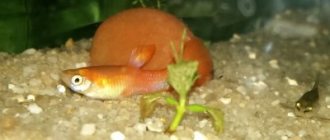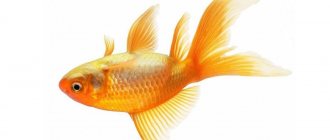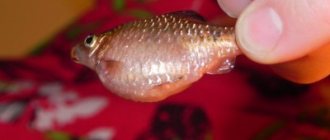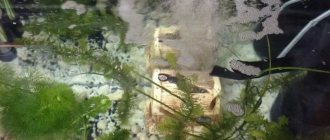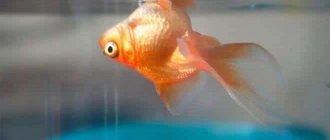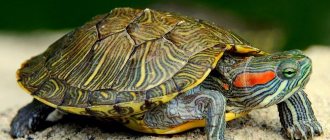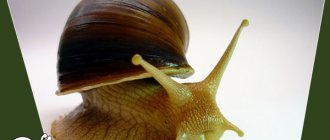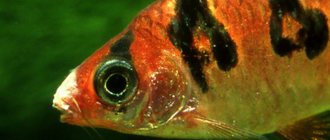First of all, I highly recommend that you stop feeding frozen food, especially cold food. Freeze-dried food is absolutely safe, balanced and healthy for fish. Tetra Min and Tetra Rubin are perfect for your fish. To accurately calculate the required amount of food, you can follow a simple rule: the fish must eat the entire portion without any residue within 10 minutes.
Mollies are fish that give birth to fry ready for life. Before giving birth, females begin to retire to quiet places in the aquarium, this may be the reason. The cause may also be a disease, for example, inflammation of the swim bladder (often caused by feeding cold food), the symptoms of which are bloating, long, colorless excrement and ruffled scales (the first two signs appear first). In any case, you did the right thing by placing the fish in a separate container. Try to create the same conditions in it as in a general aquarium. Soil and decor are not needed, and plants, including artificial ones, can be placed. Watch the fish for a few days. If you see the listed symptoms or any other signs, describe them, we will try to identify the disease and offer methods of treatment. You can send a photo. We are in touch!
PS If the fish has fry, it will be necessary to immediately transplant it back into the general aquarium, and start feeding the fry with freeze-dried food crushed into powder three times a day.
It is better to plant the mollies in a separate container and observe it for 2 weeks. If any additional symptoms appear, write to us and we will try to help. In a general aquarium, it is necessary to arrange a quarantine: do not introduce new fish (plants, shellfish, etc.) and, accordingly, do not give them away, also for 2 weeks. In the depositor (a 3-liter jar is enough) you can place a sprayer with 2-3 thin streams of air. Change water and clean the bottom 2 times a week. You don’t have to feed the fish for the first 3-4 days.
Causes
- Water parameters and quality. The optimal conditions for keeping mollies are temperature 24 – 28°C, acidity 7-8.5. A filter and/or aerator is required. The volume of water for 1 individual is at least 4 liters. However, even if all these conditions are met, the fish may be uncomfortable due to the rare change of water - for any type of aquarium fish, a weekly partial change of water in the aquarium is necessary. Mollies also love salted water; perhaps a small amount of salt added to the aquarium will put the fish in a good mood.
An upcoming addition to the molly family. Pregnant females often lie low and breathe heavily before giving birth. A dark spot in the anal fin area will indicate that birth is approaching. Carefully monitor the condition of the fish and perhaps within a day you will have mollies fry.
- Binge eating. It would seem that this is not the worst reason for the molly to lie on the bottom, however, overeating is deadly for fish! There is a possibility that the portions you give to the fish are too large, and the molly is quite gluttonous and does not know how to stop in time. Or the fraction of food you use is too large, which can cause intestinal problems, blockage and death of the pet.
- Injury, the fish may get hurt on the decorations or get injured in a skirmish with uncooperative neighbors, check the compatibility of your pets.
- Swim bladder dysfunction. It can be caused by injury, infection, or age.
- Parasitic and infectious diseases. In this case, the molly lies on the bottom, and plaque or new growths appear on its body. This is a bad sign, but you may be able to cure your pet with Bicillin-5 solution.
There are many reasons why molly lies on the bottom and in each specific case you should take different measures that are suitable specifically for your situation. If you have already encountered this, please share your experience in the comments to this article.
Ask a new question in the consultation “Aquariums/Questions about keeping” No. 2648 Mollies lie on the bottom
| Elena Guest (not registered) | Pet breed: Mollies | Pet gender: Unknown. | Pet age: unknown | Russia | New Urengoy Hello. A week ago we added two mollies to an aquarium (54 liter filter, compressor, lighting, heater). They were cheerful, ate well, swam together (male and female), but for two days they both lay on the bottom, eating but little. Tell me what is happening to them? Neons, catfish and barbs also live in the aquarium. We change the water 1/3 hour once every 4 days. We feed 2 times a day, water temperature 26-28 C light 12-13 hours. |
| 31.01.2010 22:03 | Answers: 1 ; Comments: 27 |
| Ask a new question in the consultation “Aquariums/Questions about content” Author: · Published 03/05/2020 · Updated 03/18/2021 For beginners, it is recommended to get fish that do not cause trouble and do not require special care. One of them is Molliesia. It belongs to the group of the Poeciliaceae family. There is a wide variety of coloring and external features. Fish get along well with other species because their predatory instinct does not work. This article will talk about the varieties, key points of keeping, the difference between a female and a male, as well as obtaining offspring of the Mollies aquarium fish. |
Overfeeding Mollies
One of the most common causes of poor health, excess food can lead to serious consequences, even death. At first glance, it may seem that there is nothing wrong with the fact that the fish loves to eat tasty food and eat a lot. Unfortunately, this species is too voracious and cannot stop until it has eaten all the food. The gastrointestinal tract is unable to cope with the digestion of large amounts of feed, which causes intestinal blockage. The fish sinks to the bottom and, breathing convulsively, dies.
Mollies aquarium fish
Molliesia is a viviparous fish from the family Poeciliaceae. Natural habitat: southeastern United States, North American region and South America. Mollies can be seen in the shallow waters of rivers or lakes, in salty bays and on the coasts of the salty sea.
As for external data, Mollies are a beautiful fish. There are many varieties of color: from silver to black. Sometimes there are glimpses of blue and yellowish hues. The body is elongated and slightly flattened laterally. The large mouth cavity allows the fish to feed on crustaceans and plants in its natural environment. The side fins are usually short, and the rear fins are rounded. The eyes are relatively large.
Aquarium fish Mollies maintenance and care
Mollies are not a capricious fish, but nevertheless, owners should know the basic rules of care in order to provide it with comfortable living conditions:
- maintain the required temperature conditions. Mollies are heat-loving, so heat the water from +23-28° C. Coolness negatively affects their general condition and health. Install a heater that maintains the temperature. Acidity from 7-8.5 pH. Hardness from 10-35° dH;
- you need to buy a large aquarium of 60 liters for a flock of 7-10 individuals, since molly requires more space, they do not accept crowded conditions. A lid in this case is required, since fish tend to jump out;
- Mollies live in schools of 7-10 fish. They are nimble and fast, they like to cut through spaces in the upper or middle layers of water;
- systematic water replacement will benefit every aquarium inhabitant, and Mollies are no exception. Change aquarium water in a ratio of 30% to 100%. This manipulation will protect the water from the appearance of unwanted nitrogen compounds;
- do not forget about filtration and aeration;
- The aquarium should be illuminated for approximately 12 hours. Therefore, we advise aquarists to fill the area with open areas and artificial lighting;
- the presence of decor is important: caves, stones, aquarium plants (Valeseria, Ludwigia, Elodea, Limnophila, Saggitaria);
- Any soil is suitable;
- Mollies love brackish water. You can add 1 tbsp to the water. a spoonful of salt per 20 liters of water. This procedure is carried out if only molly lives in the aquarium.
Preventive methods to prevent the problem
Often, beginners who decide to have a beautiful aquarium do not even suspect what difficulties await them. To avoid trouble, you need to familiarize yourself in advance with the conditions of keeping fish and the consequences of violating them. As the saying goes: “Forewarned is forearmed.” In this case, we are talking about the necessary knowledge that will allow you to avoid mistakes.
S. M. Kochetov, “Aquarium for Beginners,” ed. "Veche", 2005.
In order to never see your mollies at the bottom of the aquarium in complete helplessness, you need to provide it with optimal conditions and the necessary care in advance.
It is important to follow these recommendations:
- Choose the right size of the aquarium. The optimal container size, providing comfort and sufficient space for a family of four males and four females, is from 80 liters. If there are other types of fish, the volume must be at least 115 liters.
- Use well-settled water of the required temperature, acidity, and hardness.
- Ensure sufficient aeration in the aquarium.
- Systematically change the water and clean the soil from organic residues. For mollies, update sessions are recommended every 7-10 days. In this case, a bottom siphon is required. The volume of water replaced is at least one third.
- Using special indicators, constantly monitor the water condition for vital indicators for fish.
- Aquarium indicator tests allow you to monitor the optimal state of water.
A simple experiment allows you to determine acidity, hardness, and the presence of ammonia, nitrate and phosphate compounds. Indicators are sold in specialized pet stores. Many manufacturers include instructions for use and a table of standard indicators for the most common types of fish.
- Organize a systematic diet that excludes overfeeding . Experts say that it is better to underfeed the fish than to overfeed it. But this does not mean that she should constantly starve. There should be so much food that it is eaten without a trace, within a few minutes. For the healthy development of mollies, plant foods should predominate in its diet.
- In pet stores you can purchase ready-made food intended for mollies.
- To avoid mechanical grasses that lead to diseases, you should not house peaceful fish with more aggressive species. They will not be suitable neighbors for mollies:
- Astronotuses,
- Goldfish,
- African and South American cichlids.
If you follow the listed precautions, you will most likely only be able to see mollies at the bottom when they are pregnant. And this is good news. It is much worse when it was not possible to protect the fish from negative effects, for example, from diseases.
Mollies what to feed
Molly fry are fed frozen or dry food from well-known manufacturers, which must be crushed before feeding. Frozen food, defrost to room temperature.
Remember that fish are gluttonous, so it is necessary to include vegetarian food in the diet or set aside diet days with minimal food consumption.
The tank must have green spaces: algae with soft leaves, mosses rich in fiber, which the molly can eat on its own. Adults need to be fed once a day, and fry – 2-3 times.
Reference! To enhance the color of fish, feed containing carotenoids is used.
Who do mollies get along with in an aquarium and how to distinguish a female from a male?
Representatives of this species are peaceful and do not conflict with other aquarium fish. They need the same quiet neighbors who will not chase them, much less eat them.
The following are considered good neighbors for molly: Guppies; catfish; Pecilia; Danio and Swordtail. Also, Mollies will not be harmed by Cockerels; Angelfish; Gourami; Labeo; Tetras.
The maturation of Mollies is a rather long process. Puberty in females occurs much earlier - after 6 months, and in males even longer - closer to 10-12 months. The main difference between individuals is the anal fin.
Mollies on the bottom
Sometimes there are cases when the behavior of aquarium fish changes dramatically. This article will tell you whether these changes are the norm, or whether it is still worth taking care of your pet’s health.
Reproduction of Mollies in a community aquarium
The ability to create offspring occurs at the age of 8-12 months. For the breeding process in an aquarium, 2-3 females are calculated for each male. Fertilization occurs in a spacious tank, in warm salted water. Since all platies are classified as viviparous fish, fry are born without going through the egg stage. The male immediately fertilizes all the eggs available to the female Molly.
During pregnancy, Mollies get fatter, darkening becomes noticeable on the belly, and the activity of the fish decreases. The female increasingly hides in the greenery away from her neighbors, looking for a secluded corner. Pregnancy lasts about 1.5 months. The female can be placed in another aquarium or in a nursery, which is located in a common aquarium.
One female can give birth to 20-150 fry (depending on the type and size of Mollies).
Reference! Monitor any temperature changes and change the water promptly, otherwise the platies will not be able to reproduce healthy fish or will get sick. The saddest outcome is that the female may give birth to dead fry.
When can mollies normally lie on the bottom?
Mollies normally lie on the bottom only in two cases. Moly’s strange and unusual behavior to the untrained eye may be associated with her preparation for the upcoming birth. You can find out that a fish is pregnant by the following signs. Precursors of labor include: a newly appeared black spot on the abdomen, a swollen anus, an increase in body size and Molly's position at the bottom of the aquarium.
Mollies may be at the bottom if you overeat. Fish of this family are terrible gluttons, so it is not surprising that after a hearty lunch the fish decides to rest on the bottom.
Mollies species
In the wild, there is a wide variety of Mollies, which differ in color, fin structure and habitat. In our material, special attention is paid to the most popular types:
Aquarium fish Black Mollies (Sphenops or Lyra)
Black mollies live in a variety of Mexican and Colombian waters. The main color is classic black. Brown, greenish and sky-blue tints on black scales are not excluded.
Strong body of oblong shape, slightly flattened on the sides. The eyes are quite large, the head is small. The maximum size of a female black Molly is 8-10 cm, a male is up to 6 cm. You need to keep a black Molly in a flock of 7 to 10 fish in an aquarium of 60 liters or more. Water temperature from +24-27° C, acidity from 7-8 pH, hardness from 10-20° dH.
Note that females in such flocks should predominate so that males do not have fights among themselves. Black Mollies can produce offspring every 30-40 days.
Mollies red/orange aquarium fish
Red mollies are found in fresh water bodies and salt bays, Mexican and Colombian sea coasts. The appearance is represented by a flattened body, slightly elongated.
Failure to comply with care rules
In addition to the physical properties of water, it is necessary to ensure and maintain biological balance in the form of aeration and purification. Control of the chemical composition of the water in the aquarium plays an important role.
- Lack of oxygen causes a disruption in the respiratory function of fish, which leads to negative consequences of all vital processes in the body, including motor ability.
- Rare water changes cause the accumulation of organic residues, which, when decomposed, release toxic substances that contain ammonia and nitrates. They lead to fish poisoning.
Mollies diseases: signs, causes, treatment
The sad fact is that Mollies are susceptible to a number of diseases. In most cases, improper care. If you promptly identify the initial signs of inflammatory processes, you can save the life of the fish. Let's take a closer look at the most common of them:
Non-communicable diseases Mollies
- Hypothermia or strong heating of aquarium water. Too high a temperature leads to premature aging of living organisms. Low temperatures provoke the appearance of diseases and even death. Monitor the temperature with a thermometer, which should be in the aquarium;
- Oxygen deficiency. If you notice that fish are greedily gasping for air and swimming only on the surface, immediately buy a more powerful compressor. Otherwise, the molly experiences infertility, suffocation, loss of appetite, and soon they die;
- Chlorine poisoning. An excess of chloride compounds will not benefit Mollies: it is difficult for them to breathe, the color is lighter, restlessness in behavior appears, and there is no reaction. Death comes very quickly. Therefore, regularly monitor chlorine levels;
- Alkali disease. There is a decrease in activity, timidity in all fish, mucus appears on the gills, and the color becomes lighter. You should monitor the level of alkali in the water and avoid changes;
- Obesity. Regular overfeeding threatens to kill the fish. Prevention is a combination of different types of feed in small doses and 2 times a day;
- Gas embolism. Develops when there is an excess of oxygen. The gills of the fish darken and their behavior is extremely restless. Occurs when a large volume of untreated tap water is poured into the aquarium. To improve the condition of Mollies, it is necessary to replace the water with 30% settled water.
Contagious diseases Mollies
- Hexamitosis. Lumps and pits appear on the head. If the outcome is positive, recovered individuals will have traces and scars. For treatment, you should heat the water to +35° C or add metronidazole to the water;
- Fin rot. The fish's fins are deformed, the abdomen may be slightly swollen, and there are ulcers. The infected individual is separated from others, the water is treated with a solution of levomethicin;
- White-skinned. The body color turns completely white, right down to the eyes. It is necessary to disinfect the entire area: transfer the fish to another aquarium and add levomethicin to the water;
- Mycobacteriosis. A practically incurable disease, the so-called tuberculosis in fish. Infected people lose their vision, their bones come out, and ulcers and other growths may appear on their torso. Treatment will only help in the early stages. Minocycline and copper sulfate must be added;
- Ulcer. The causative agent can be either a new fish or just purchased food. Mollies have swollen eyes, loss of appetite, and dark spots that form into ulcers. Immediate treatment with potassium permanganate is necessary.
Invasive Molly Diseases
- Trichodinosis. Young individuals with weak immune systems are susceptible. The fish constantly rub against different surfaces, plaque and mucus appear on the body, and weight decreases too quickly. Treatment is carried out with the addition of table salt and raising the temperature to +31 ° C in a separate aquarium;
- Glucose. With this disease, only death is possible. Molly needs to be disposed of, the aquarium disinfected and the fish reintroduced;
- Ichthyobdosis. Mollies fins stick together, gills change color, and mucus appears on the body. Disinfection is carried out using methylene salt and heating water to +35 ° C in another container.
Thus, by following all the recommendations, you can give a second life to all the inhabitants of the aquarium, including Mollies. And they, in turn, will delight for a long time, give peace and tranquility to their owners.
Mollies aquarium fish video:
Share with friends on social media. networks
10% DISCOUNT FOR BUYERS FROM REGIONS OF RUSSIA AND CIS COUNTRIES FOR AQUARIUMS, FISH, PLANTS, ETC.
Mollies lie at the bottom, fish are lethargic
Mollies lie at the bottom, fish are lethargic
Post by olinca » May 27, 2012, 11:46 pm
Today a friend, a novice aquarist, called and said his black molly was sick. He said that some white thread was hanging from it, the fish froze at the bottom, and responded weakly to food. Over the phone, she told him to set it aside and add a little salt to the tank. In the evening I came to look: during the transplant, the thread fell off, so I saw a fish that looked absolutely normal, but motionless, frozen at the bottom. I began to figure out what was going on. I can’t fill out the aquatic questionnaire from a netbook, so I’ll write it like this: the aquarium is about 60 liters, there are 12-13 zebrafish (different), 2 neon, 2 black mollies, 1 ampularia. There are few plants (3 vallisneria bushes, 1 cryptocarina bush, tufted hornwort). The soil is river sand, pebbles, shells, everything is mixed and a layer of at most 1.5-2 cm. Lighting is one kind of lamp built into the lid, but in my impression it is weak, illuminating only the top layer of water in the middle of the aqua. Filtration around the clock with oxygen. Water parameters: ammonium-ammonia is closer to zero, probably about 0.25; nitrite 0.1; nitrate 40; pH 7.5 (measured myself), T 28 degrees. The food is dry, I don’t remember the brand, but it’s one of the well-known ones, feeds once a day, the food manages to fall to the bottom before it is eaten (I told you to feed less, but that’s the point.) Change water 30% once a week with settled water , the bottom does not siphon. Changes: the molly freezes at the bottom or behind the heater, as if trembling or just hanging apathetically with its fins tucked. The second floats as if nothing had happened. The danios are kind of sluggish, swim slowly, one hangs in the water column with its tail down. Recently one neon disappeared without a trace (there were 3 of them).
Fin rot - what is it?
Fin rot is an infectious disease of bacterial etiology. The causative agent of the disease is considered to be a number of bacteria that penetrate into an artificial reservoir with other fish, plants or food. Fin rot in fish is well known to aquarists, since the disease often disturbs underwater inhabitants. If left untreated, fin rot leads to death - young fish can rarely be saved, but the probability of saving adult fish is high. To save your pets from certain death, you should know how to treat fin rot in a community aquarium.
Pathological conditions.
Unfortunately, this behavior of fish is not always the norm. In some cases, strange behavior of fish may be associated with various diseases. Very often, the position of fish “lying on the bottom” occurs when various parasites invade their body.
Typically, such strange behavior is complemented by the appearance of a strange coating or new growth on the surface of the fish’s body. In such cases, it is necessary to immediately carry out antibiotic therapy (Bicillin-5 is usually used as a drug), after which the aquarium is subjected to the strictest disinfection.
With some infectious diseases, Molly can also go to the bottom. Sometimes this position of the fish can signal injuries to the fins or skeleton. Unfortunately, in such cases this is considered a poor prognostic sign.
Why does the disease appear?
Rotting of fins in fish develops only in conditions favorable to it: where there is no biological balance, feeding is not carried out according to the rules. That is, they do not receive enough necessary microelements and vitamins, as a result of which immunity decreases, and it is easier for any viruses to penetrate into a weakened body.
The cause of the disease is the bacteria Vibrio, Pseudomonas and Aeromonas; they can be introduced into the home pond in various ways. Most often, the source of infection is a sick fish released into a community aquarium.
The disease has another name; in scientific circles it is usually called pseudomonosis.
Reasons for development
Bacteria that cause fin rot in aquarium fish are constantly present in the water, but do not pose a threat to pets with strong immune systems. However, it may weaken due to the influence of unfavorable factors:
- Stress.
- Decay of living flora.
- Temperature violation.
- Pollution of the water eco-system.
- Wrong neighbors.
- Deficiency of vitamins and minerals in the diet.
In addition, bacteria can penetrate inside along with food, contaminated fish and plants.
Natural habitat
Mollies are an aquarium fish of the genus Poeciliidae. In the natural environment, these fish quickly adapt, easily find food for themselves and are perfectly compatible with sea and river inhabitants. These fish were brought to Europe in the 20th century from the South American continent. The breeding of these “settlers” began in the 40s. Hybrids began to appear at the beginning of the 20th century. Their population is growing day by day.
Brief description of fish in nature
It's nothing special. Its natural color is gray-silver, black spots are distributed throughout the body, darkening is located around the eyes of the mollies. It looks like an ordinary fish, but aquarium inhabitants are a completely different matter. The aquarium fish market is full of variety. They come in different colors: silver, orange, variegated, white. These peaceful inhabitants of the aquatic environment are not at all aggressive and have good health.
Various mollies
Advice: for beginners, you need to make a choice in favor of small fin mollies and its hybrids. They can live longer in small aquariums. And, compatibility with other fish makes this species practical and unique.
Symptoms
The symptoms of fin rot are characteristic and allow you to accurately identify the disease. Fin rot in aquarium fish is accompanied by the following external signs:
- Scarlet dots on the fins appear due to clogged blood vessels.
- The rays of the fins become dull, the tips become covered with a light coating.
- The pectoral and caudal fins are destroyed, the tips become frayed and unkempt.
- Ulcers form on the body, rotting occurs - at this stage it is unlikely that it will be possible to cure the fish. The eyes become cloudy.
It is important to know that fin rot in aquarium fish can be eliminated without consequences only if treatment is started in a timely manner. If the pets' fins have already been destroyed and the process has affected the body, then salvation is unlikely.
Invasive diseases
Glucose
This type of disease is one of the most dangerous. Glucose disease affects the entire body at once, and it cannot be cured.
Symptoms include:
- The appearance of bruises.
- White spots appear on the body, after which bumps form in their place.
- Mollies swim on their sides.
The infected individual is immediately removed from the general aquarium and disposed of. The aquarium is disinfected and pre-launched.
Trichodinosis
The causative agents of trichodinosis enter the aquarium with live food, plants, and soil. If the fish's immune system is not strong enough to fight off the infection, the fish will become infected. The weakest individuals fall ill first. As their condition worsens, the bacteria spread throughout the aquarium, grow stronger and infect all inhabitants.
Symptoms:
- Fish constantly rub against different surfaces.
- A plaque appears on the body.
- The gills become lighter.
- Mucus appears.
- Thin body, as appetite disappears.
- Frequent and difficult breathing.
Treatment is possible if detected early. Sick mollies are removed and the water temperature is gradually raised to +31 degrees, while table salt is added (20 g of salt for every 10 liters).
Ichthyobodosis
Just as in the previous case, the infection enters through food, plants, and soil. Traces of mucus appear on the body, and gradually the body begins to decompose. The fins stick together, the gill covers change color. You can see that periodically the sick fish rises to the surface of the water and takes in air.
For treatment, you will need to take a separate container, move the patient there, gradually heat the water to +35 degrees, add methylene salt.
How to prevent fin rot
Fin rot is a disease that often worries aquarium fish and makes aquarists nervous. However, it is possible to avoid the development of the disease if you follow the recommendations for the care and maintenance of pets:
- Phenotypes should not be fed live food that the owner is not sure is safe. This is especially true for food that is caught independently in reservoirs and rivers - with such food there is a high chance of introducing bacteria into the tank that causes fin rot.
- After purchasing a new fish, you should carefully examine your pet for symptoms of the disease. If the fish is suspicious, the underwater inhabitant is placed in a quarantine tank, where they are kept for twenty days.
- The aquarium with fish is regularly cleaned, cleaning equipment and siphoning the substrate. If the owner has several tanks, separate care tools are used for each and disinfected.
The best treatment for fin rot in fish is considered to be taking preventive measures in the aquarium. You should take care of the life and health of pets, which are completely dependent on the aquarist: clean the tank, monitor the quality of food and water parameters. If the disease does attack, you should not despair, but use one of the methods for treating fin rot, following the advice and instructions.
Contagious diseases of mollies
White-skinned
With white skin, the appearance of mollies changes significantly - the body color becomes pale, then completely white, and the eyes may turn white. Sick individuals are predominantly found in the upper layers of water. The pathogen comes from plants or can be introduced with new animals.
If a disease is detected, the soil and water must be disinfected, the fish are removed separately and chloramphenicol is added.
White skin is a widespread infection that affects all types of aquarium fish.
Fin rot
It is perhaps the most common disease that can be found. Capable of infecting all types of fish. This appears due to poor quality care - bad water or mechanical damage.
The fins undergo deformation, their size becomes smaller, and they become lighter. In some cases, ulcers can be found on the body, and the stomach becomes larger.
Varieties
The aquarium molly fish varies in appearance depending on the species. Some grow up to 5 cm, others, due to their lush fins and tail, reach up to 10 cm. The body shape is also different. Most species are artificially bred. In nature, mollies live in brackish lakes of Central America. Natural inhabitants grow larger than aquarium ones, up to 12 cm for males and up to 16 cm for females.
- Mollies balloon - the body shape is similar to the platie fish: the body seems to be elongated in a vertical plane, there is a curvature of the spine on the back, the stomach protrudes. The fins remain standard sizes, the mouth points upward. The size of the fish is 3.5-4.5 cm, the life expectancy is shorter than that of other fish - up to 3 years.
- Yellow mollies, orange mollies, red mollies - these fish are standard in body shape: an elongated body, the mouth is located in the upper position, the abdomen is slightly convex, like a pregnant fish. The fin sizes are standard, not conspicuous, average. Translucent, can have patterns in the form of dots, the shade repeats the color of the body.
- The small-finned molly is one of the natural species that has given birth to many breeding forms. It has a standard laterally compressed elongated body and fins of regular shape and size. Colors may vary.
- Molliesia sphenops - body color is coal-black, the body shape is elongated, somewhat widening in the abdomen area, then narrowing towards the head. The mouth is located in the upper plane, it is convenient for them to collect food from the surface of the water. Alternative names: black molly, lyre molly.
- White mollies - the size, body shape and mouth are the same as those of the sphenops, differs in color: a silver-white fish. Alternative names: snowflake molly, silver molly.
- Sail molly - characterized by its small body size (up to 4 cm) and luxurious fins. The colors are different - silver, green, blue and black. The fins may have dotted patterns. The dorsal fin is similar to a sail, it is much larger than the other fins. Alternative names: Velifera molly, high-finned molly.
- Mollies latipin (broad-finned) - body color is pearl-white with a bluish tint. Feature: fins - they are larger than those of other species and flutter in the current like a veil.
Conditions of detention
Mollies are a very easy-to-keep, peaceful fish that does not require special attention when caring for itself. The first thing a novice aquarium hobbyist should remember is that mollies are very demanding on the characteristics of the water in an aquarium dedicated to life. For example, this fish easily tolerates hard brackish water with a constant hardness of over 25-30dGH and feels simply great in such extreme conditions, but if this creature is placed in more comfortable conditions with soft water dGH-0-2, this can lead to tragedy. Then the fish will simply jump out of the container. The reason for this may be unstable carbonate hardness, which can almost instantly change its kN parameters from 0 to 18, and this can plunge the pet into severe stress, which will force the fish to look for new, more stable habitats.
Fish prefer containers with a volume of 30 to 50 liters per steam, while the water temperature should be limited to a range of 15 to 25 degrees Celsius.
The optimal temperature for keeping mollies is 25-27C.
The acidity of the water is required to be slightly alkaline in the range of 7-8.5
In general, mollies are a very tolerant fish in terms of living conditions and can withstand simply Spartan characteristics.
Moreover, it is absolutely not uncommon for mollies to be introduced into a marine aquarium with salt sea water. In this case, extreme sports fans should be warned, because transplanting into salty water of oceanic density is possible only in case of long-term adaptation to new conditions of detention, but transplanting into water with Black Sea or Baltic salinity will not cause the molly pronounced discomfort.
Feeding Mollies
Under natural conditions, mollies usually do not experience difficulties in finding food items to saturate their bodies with nutritional substances. Absolutely any objects suitable in size for a hungry fish can serve as nutritious food. Mollies are happy with any prey, be it a small insect that has fallen on the water surface, a freshwater worm looking for food in the muddy sediments, or an amphipod floundering near the bottom - everything will attract the attention of a hungry fish and arouse in it an ineradicable desire to taste this living creature.
This insatiable creature will definitely not go hungry and will always be able to find a tasty morsel among the thickets of aquatic vegetation.
A characteristic feature of viviparous cyprinodonts, which directly indicates a feeding preference, is the location of the mouth of the aquarium animal. The mouth of mollies has the shape of a narrow slit and is always directed upward - this is a sign of a surface fish that collects food from the upper echelons of natural reservoirs.
In a home aquarium, such specific nutrition can be easily replaced with dry food, a wide range of which is available in any pet store or bird markets in the country.
Feeding
The diet of mollies consists of three main components:
- Protein food. There should be a little of it, it’s a tubifex, a bloodworm.
- Plant foods are the main part of the diet. It is to obtain natural vitamins that mollies eat live plants with pleasure. Without them, the fish’s immunity suffers significantly.
- Special dry food for viviparous fish helps maintain color, restore strength, and properly grow and develop. Dry food is the basis of the diet. For fish with this mouth shape, dry food is preferable to flake food, which does not sink immediately. The fish collects food from the surface.
Breeding mollies. How to distinguish a female molly from a male
Female mollies have a more rounded abdomen and a triangular anal fin. While in male mollies the body is more protruding and the anal fin has the shape of a sharp tube, which, during the maturation of the male individual, folds into a thin narrow tube, turning into a gonopodium.
The molly fish is viviparous and therefore, if there is a mature couple in the aquarium, the appearance of fry will not take long.
Male mollies constantly chase females, trying to mate with them. After one-time intercourse, females become pregnant, which lasts 30-45 days and ends with the birth of 20-40 babies. Molly fry are ready to eat immediately after birth.
